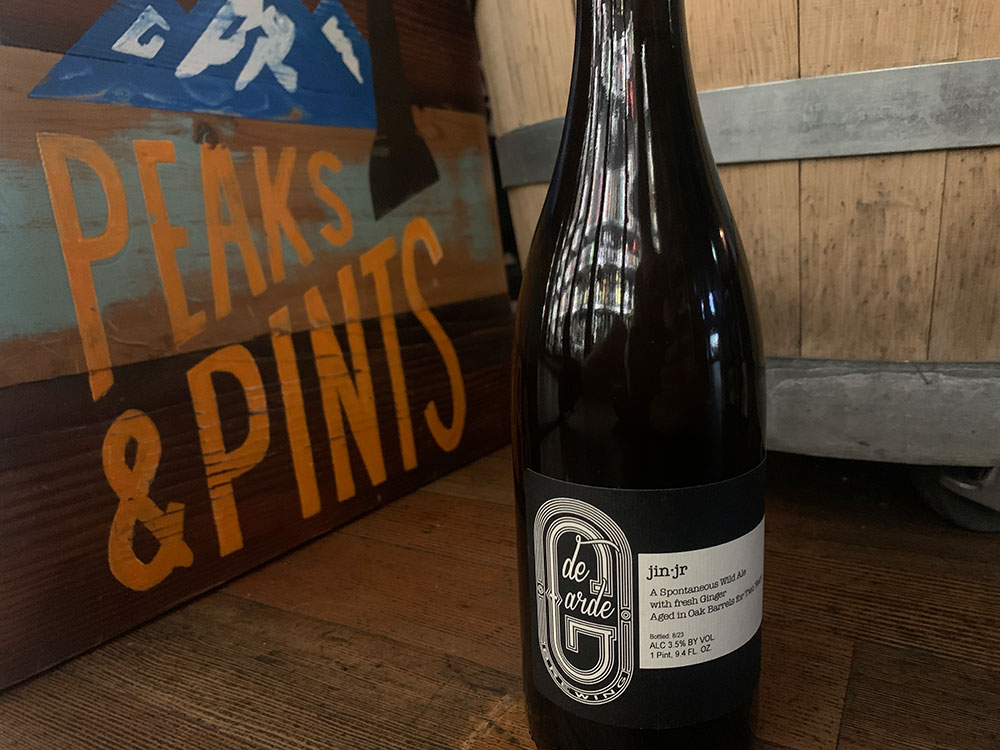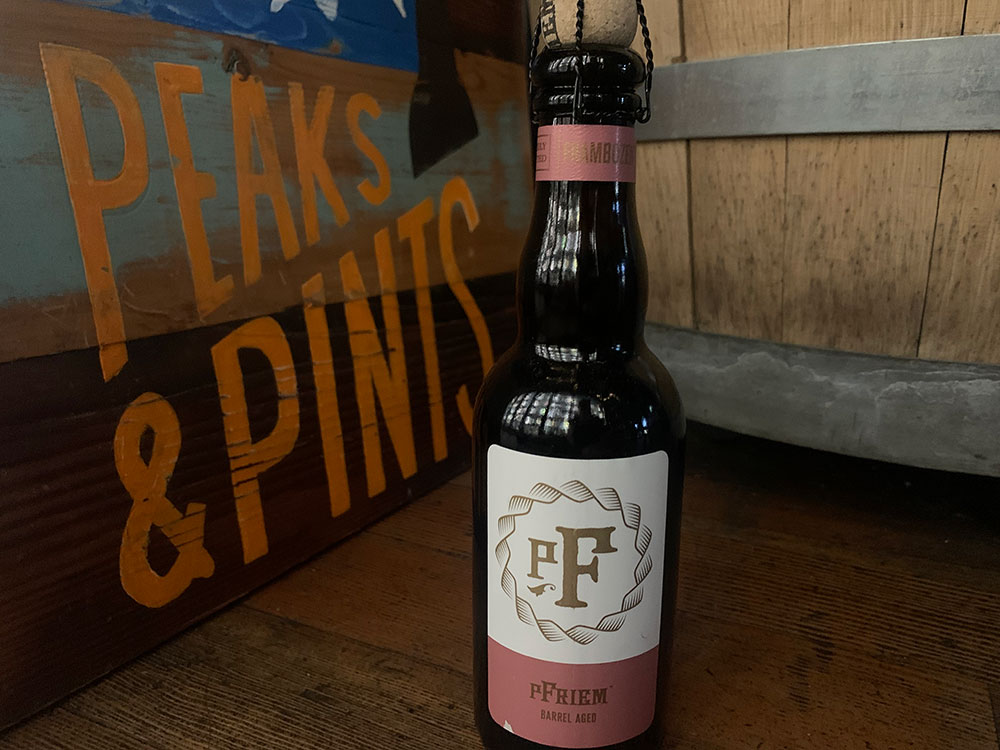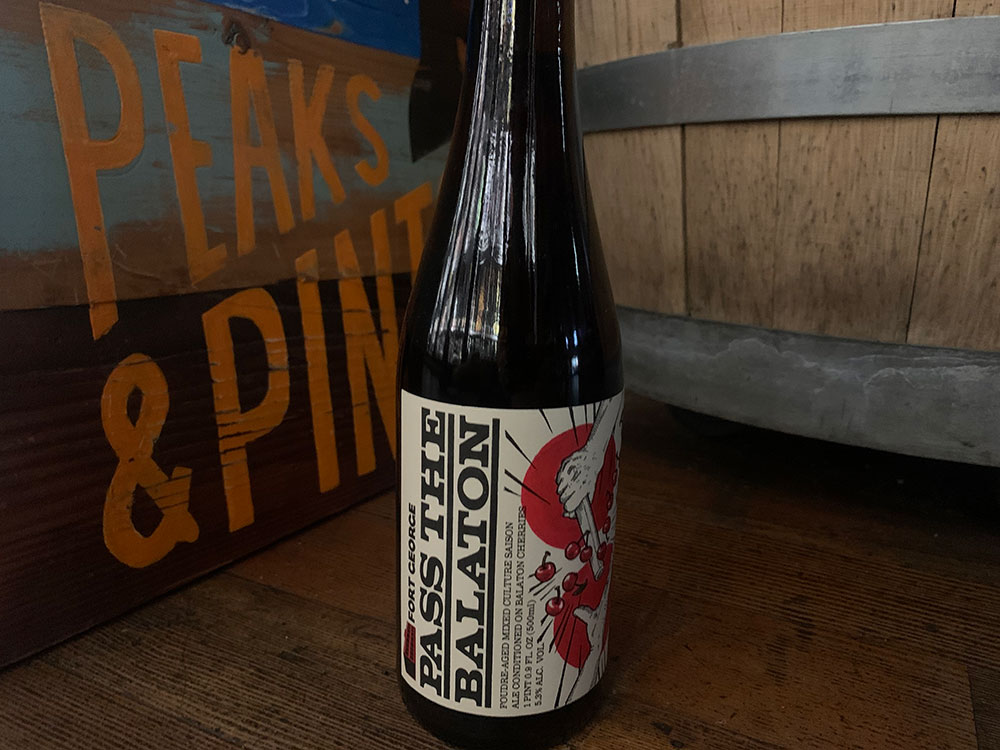 Fermentation, at its most basic, is the process by which yeast eat sugars found in wort and convert them into alcohol. Wort is liquid that contains grain sugars and is nutrient rich, that is then fermented with microorganisms to make beer. In typical modern brewing wort is transferred to a stainless-steel tank where it’s carefully inoculated by a single yeast culture. Depending on the type of beer, and a brewery’s preferred processes, after primary fermentation beer may be either packaged and sold, or it may undergo additional cold conditioning or lagering, also typically in stainless steel. In a barrel-aged beer, after primary fermentation in steel, the fermented beer is transferred to a barrel for additional aging, usually to add flavor or texture from the wood of the barrel, and/or from the liquid previously in the barrel. There isn’t typically any fermentation in the barrel in a barrel-aged beer. In barrel-fermented beer, wort is put into barrels after an inoculation step so that primary fermentation takes place in the barrel. This process is quite slow (taking months to years) and leads to complex flavor profiles and sometimes hard-to-predict results. Since the Grit & Grain Podcast will record a “fermentation” episode in the Peaks & Pints Event Room at 4:30 p.m., our daily, in-house flight will center on barrel fermentation today. Grab Peaks and Pints Beer Flight: Barrel Fermentation and join the podcast recording or drop by anytime today and get your barrel fermentation on. Cheers!
Fermentation, at its most basic, is the process by which yeast eat sugars found in wort and convert them into alcohol. Wort is liquid that contains grain sugars and is nutrient rich, that is then fermented with microorganisms to make beer. In typical modern brewing wort is transferred to a stainless-steel tank where it’s carefully inoculated by a single yeast culture. Depending on the type of beer, and a brewery’s preferred processes, after primary fermentation beer may be either packaged and sold, or it may undergo additional cold conditioning or lagering, also typically in stainless steel. In a barrel-aged beer, after primary fermentation in steel, the fermented beer is transferred to a barrel for additional aging, usually to add flavor or texture from the wood of the barrel, and/or from the liquid previously in the barrel. There isn’t typically any fermentation in the barrel in a barrel-aged beer. In barrel-fermented beer, wort is put into barrels after an inoculation step so that primary fermentation takes place in the barrel. This process is quite slow (taking months to years) and leads to complex flavor profiles and sometimes hard-to-predict results. Since the Grit & Grain Podcast will record a “fermentation” episode in the Peaks & Pints Event Room at 4:30 p.m., our daily, in-house flight will center on barrel fermentation today. Grab Peaks and Pints Beer Flight: Barrel Fermentation and join the podcast recording or drop by anytime today and get your barrel fermentation on. Cheers!
Peaks and Pints Beer Flight: Barrel Fermentation
 de Garde Jin Jr.
de Garde Jin Jr.
3.5% ABV
Tillamook, Ore., is a sleepy, remote, and often damp coastal town 74 miles west of Portland. It smells of sea air and dairy farms. It’s also home to founder and head brewer Trevor Rogers’ de Garde Brewing, whose singular focus is spontaneously fermented, barrel-aged beers. They don’t add laboratory cultured yeast to ferment their beer. They simply cool the wort naturally in a coolship inoculating the beer with yeast and microflora in Tillamook. After the wort cools, they transfer everything to oak barrels. Each beer takes its own time in barrels to finish fermenting. Jin Jr. is a spontaneous wild ale
with fresh ginger aged in oak barrels for 2 years.
 pFriem Frambozen
pFriem Frambozen
5.7% ABV
pFriem Family Brewers primary fermentations are about 50-percent in oak and 50-percent in stainless. Then, they mature beers in neutral French oak barrels for their second fermentation, where they get topped up and have time to condition in a climate-controlled barrel house for anywhere from one to three years before they are blended and added onto fruit, which is the case for their Frambozen lambic-inspied ale. pFriem Frambozen began, well over a year ago, as fruited lambics have for centuries. The malt bill consisted of 60-percent malted barley and 40-percent wheat. Aged hops were added to the boil. Rather than sending the wort to a coolship, they used a modern heat exchanger to chill before deliberately inoculating with the same magical mixed culture that’s wafted through Belgian windows for centuries. Next the beer matured in French oak barrels for nine months. Finally, they add decadent fresh raspberries at a whopping 3.2 pounds per gallon. The fruit and the lambic were then left alone to mingle for 2 more months before bottle conditioning.
 Fort George Pass the Balaton
Fort George Pass the Balaton
6% ABV
When this mixed culture saison brewed with wild cherry blossom yeast was nearing completion, Fort George Brewery knew they needed to execute the perfect transition. That’s why months ago, one summer morning right before sunrise in the R&D Brewery, R&D Head Brewer Matt Rhodes could be found playing soothing folk ballads on a hammered dulcimer while all the brewers lined up across the cellar with handfuls of the finest, fresh Balaton cherries. One by one, the brewers eased the cherries into the mixed culture oak foudres for re-fermentation. This of course resulted in the smoothest, most melodic transition. And lo! a bright, tart, subtly funky cherry red saison was born.
 The Ale Apothecary Orobas
The Ale Apothecary Orobas
7.75% ABV
Fermented with equal parts barley and honey, honoring the early, mystical root of brewing, The Ale Apothecary adds raw honey to Orobas’ wort in barrels for wild yeast to start fermentation. After 22 months the wild ale is transferred into barrels of Pinot Noir grape pomace from Domaine Drouhin for 7 months. The result is a 100 percent naturally carbonated wild ale with honey made with 100 percent Oregon ingredients for a dry, grape, and floral sour ale with a tannic bite.=
 Firestone Walker Double DBA
Firestone Walker Double DBA
12.3% ABV
DBA — a.k.a. Double Barrel Ale — is the trailblazing flagship beer that started it all for Firestone Walker Brewing Co. back in 1996. Partially fermented in its patented Firestone Union oak barrel brewing system, DBA stands as an iconic tribute to traditional cask-fermented English ales. The hops are toned down to let the malts dance. And dance they do — the waltz. The Double DBA is brewed at double strength, then aged it for a year in 11-year-old Old Fitzgerald wheated bourbon barrels, which enhanced DBA’s classic flavors of toffee and caramel with notes of baking spice, cocoa powder, and dried fig.
LINK: Peaks & Pints beer and cider cooler inventory
